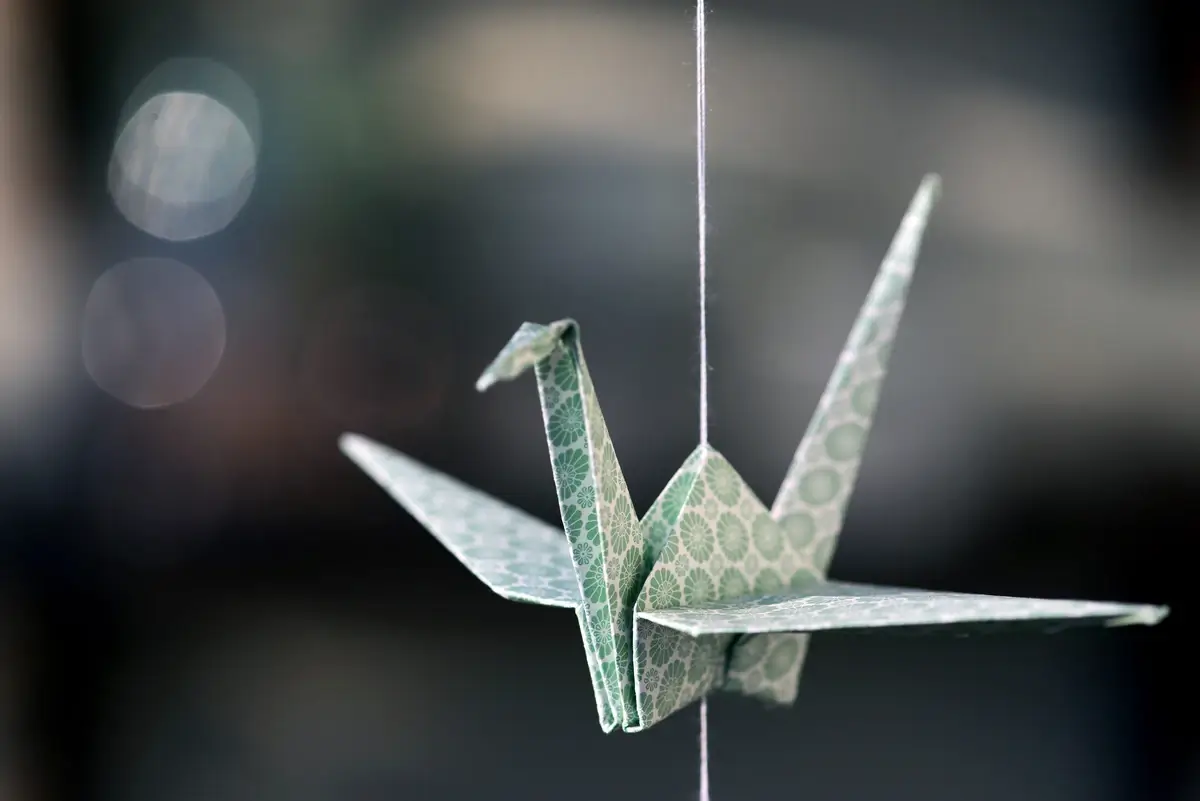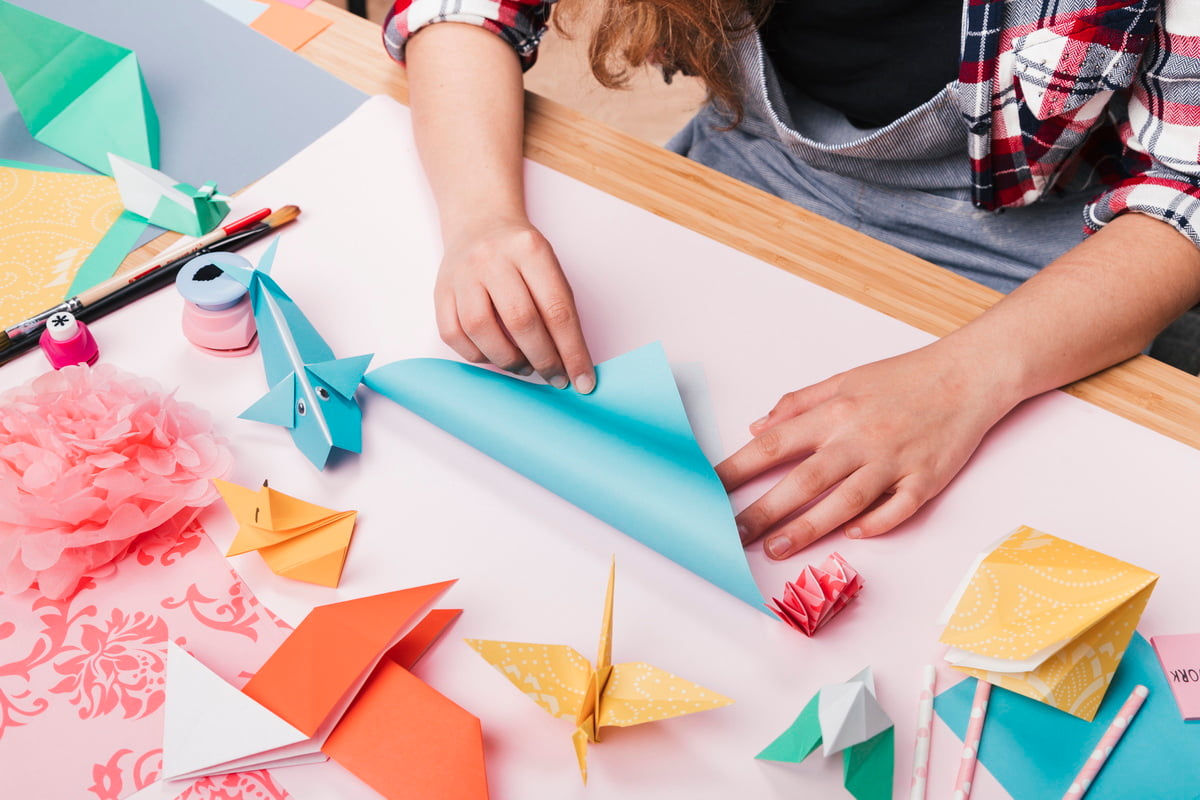Origami, the art of folding paper, is more than just a craft; it’s a fascinating blend of culture, mathematics, and innovation. Did you know that the crane, one of the most iconic models, symbolizes good luck and peace? Or that NASA employs origami principles for designing spacecraft components? Even the medical field uses origami techniques to create life-saving devices. The oldest known origami model dates back to the 1600s, while the fastest origami crane was folded in under a second.
These fun facts about origami unveil a world where simple folds transform into extraordinary creations. Dive into the incredible world of paper folding with us!
1. The Meaning of Origami and Its Origins
Origami, derived from the Japanese words “oru” (to fold) and “kami” (paper), is the intricate art of paper folding that transforms a simple sheet of paper into a myriad of shapes and figures. The origins of origami trace back to ancient Japan in the 6th century, where it began as part of ceremonial Shinto rituals and later evolved into a popular recreational and artistic activity during the Edo Period (1603-1868). This period saw the creation of many traditional models, such as the iconic crane, which symbolizes peace and longevity.
In Europe, paper folding took a different route, initially as a method of napkin folding in the 17th century. It later gained educational significance through Friedrich Fröbel’s kindergarten curriculum, which included paper folding as a means to develop children’s spatial awareness and creativity. Unlike kirigami, which involves cutting, pure origami relies solely on folding techniques like pleat folds, mountain folds, and squash folds.
2. The Crane – A Symbol of Good Luck

Image: wallpapercrafter.com
The origami crane, known as “Orizuru” in Japanese, is a powerful symbol of good luck, longevity, and peace. Rooted deeply in Japanese culture, the crane is believed to live for a thousand years, making it a symbol of enduring life and happiness. The practice of folding a thousand cranes, called “Senbazuru,” is often undertaken to wish for someone’s recovery from illness, happiness, or success.
This tradition gained international recognition through the story of Sadako Sasaki, a young girl who, after being diagnosed with leukemia due to the Hiroshima bombing, folded over a thousand cranes hoping for her health to improve. Her story has made the paper crane an emblem of peace and hope worldwide.
3. Origami Helps Develop Spatial Reasoning and Problem-Solving Skills in Children
Origami is a powerful tool in education, particularly for developing spatial reasoning and problem-solving skills in children. By engaging in origami, children learn to visualize and manipulate objects in three dimensions, enhancing their spatial awareness. This skill is crucial in fields like mathematics, engineering, and architecture, where the ability to understand spatial relationships is essential.
In addition to spatial reasoning, origami fosters problem-solving abilities. Each fold and crease requires children to follow instructions carefully, encouraging them to think critically and break down complex tasks into manageable steps. This process not only improves their attention to detail but also enhances their patience and perseverance, key attributes for effective problem-solving.
Research has shown that origami can also boost mathematical skills by reinforcing concepts such as geometry, symmetry, and fractions. The hands-on nature of origami makes these abstract ideas more tangible and easier to understand. By creating various shapes and designs, children can see and feel the results of their efforts, leading to a deeper comprehension of mathematical principles.
4. The First Book on Origami

Image: metmuseum.org
The first documented book on origami is “Senbazuru Orikata” (Folding of 1,000 Cranes), published in Japan in 1797. This pioneering work focused on the intricate process of folding interconnected cranes, symbolizing good fortune and longevity in Japanese culture. The book offered brief instructions on creating these designs, reflecting the traditional belief that folding 1,000 cranes grants the folder one wish.
This book not only marked the beginning of recreational origami documentation but also illustrated the cultural significance of paper folding in Japan. It was followed by “Kayaragusa” in 1845, which further documented Japanese customs, including origami, though it primarily focused on geometric shapes and ceremonial folds.
5. Ancient Origami Models
The practice of origami, which dates back to the 6th century in Japan, initially served ceremonial purposes in Shinto rituals. Early models were simple, reflecting the limited availability and high cost of paper at the time. These models, such as the traditional crane, are deeply rooted in Japanese culture and mythology. By the Edo Period (1603-1868), origami evolved into a leisure activity and art form, featuring nature-based motifs like flowers and birds.
Interestingly, early origami did not adhere strictly to the no-cutting rule that defines modern origami. It wasn’t until the influence of European paper-folding techniques, which emerged from the 17th-century practice of napkin folding, that the Japanese began to emphasize purely folding techniques. This blend of traditions enriched the art form, making it more intricate and diverse.
6. Origami in Space
Origami, the traditional Japanese art of paper folding, has found a surprising application in modern space exploration. Engineers and scientists have adapted origami principles to create compact, deployable structures that can be launched into space and then unfolded into large, functional devices. For instance, NASA’s Jet Propulsion Laboratory has developed the starshade, an origami-inspired apparatus designed to block starlight, enhancing the visibility of exoplanets for telescopes. This technology helps in searching for Earth-like planets by reducing the interference caused by the bright light of nearby stars.
Origami’s ability to transform large objects into small, manageable sizes is crucial for fitting extensive equipment into space-bound rockets. Once in orbit, these structures can unfold into their full size, offering innovative solutions for space missions. This application of origami not only demonstrates the versatility of the art but also its potential to address complex challenges in space exploration.
7. Most Expensive Origami

Ryujin 3.5 origami dragon. Image: wonko.info
Origami, the ancient art of paper folding, can produce exquisite and highly valuable creations. Some origami pieces have reached astonishing prices due to their complexity, the reputation of the artist, and the rarity of the materials used.
One of the most expensive origami pieces is created by Satoshi Kamiya, known for his intricate and detailed designs. His origami dragon, made from a single sheet of special washi paper, has been valued at several thousand dollars. Another notable example is the origami artist Robert J. Lang, whose intricate and scientifically precise models have fetched high prices at auctions, with some pieces exceeding $5,000.
Additionally, the value of origami can also be influenced by the materials used. Origami papers themselves can be quite expensive. For instance, a pack of rare handmade origami paper can cost over $200, making the final creation even more valuable.
Origami’s value is not just in the materials or the final product but also in the skill and creativity of the artist. Collectors and enthusiasts often pay a premium for pieces by renowned artists, especially those who have pushed the boundaries of what can be achieved with a single sheet of paper.
8. Fastest Folding Record
The record for the fastest origami folding of 1,000 cranes was achieved by Evelyne Chia from Colchester, England. She completed this impressive feat in 9 hours and 31 minutes. The challenge took place at her parents’ restaurant, where Chia worked tirelessly without breaks.
This attempt was not just for personal glory; it served as a fundraiser for NHS Charities Together, supporting healthcare workers. Chia’s record is unofficial until verified by Guinness World Records, but it significantly surpasses the previous record of approximately 12 hours.
9. The Largest Origami Crane
The largest origami crane ever created had a wingspan of 81.94 meters (268 feet 9 inches). This massive crane was crafted by 800 participants of the Peace Piece Project at Hiroshima Shudo University in Japan on August 29, 2009. The paper used to make the crane was assembled from smaller pieces into a single 100-meter by 100-meter sheet. This record-breaking project symbolized peace and was part of a larger event to commemorate the victims of the atomic bomb in Hiroshima.

Image: Allison Williams / Flickr
10. Origami Olympiad
The Origami Olympiad, officially known as the International Origami Internet Olympiad (IOIO), is a premier global competition for origami enthusiasts. Founded in 2010, it attracts participants worldwide, who compete in various categories reflecting different origami styles, such as representational, modular, tessellation, and more.
The competition is structured like the Olympic Games, awarding gold, silver, and bronze medals for excellence in each category. The 2021 Olympiad saw over 800 participants, making it one of the largest and most prestigious events in the origami community.
11. Origami as Stress Relief
Origami, the art of paper folding, has proven to be an effective stress relief tool. Engaging in this intricate craft helps reduce anxiety and promote relaxation by requiring focus and mindfulness, akin to meditation. Studies have shown that the repetitive actions involved in folding paper can lower blood pressure and decrease cortisol levels, thereby alleviating stress.
Origami is often used in therapeutic settings, including hospitals and rehabilitation centers, to support mental health and improve fine motor skills. The hands-on activity not only distracts the mind from stressors but also fosters a sense of accomplishment and creativity.
12. Practical Origami Uses
Origami, the art of paper folding, extends beyond decorative creations. It has practical applications in various fields. For instance, origami can help organize workspaces with items like desk organizers, stacking boxes, and document folders. These functional pieces can be made from single sheets of paper without the need for glue or scissors, showcasing the efficiency of origami in creating useful objects.
In engineering, origami principles are used in designing foldable structures, such as satellite panels and airbags, allowing compact storage and easy deployment. Medical fields also benefit from origami; stents and drug delivery devices often incorporate origami techniques for minimally invasive procedures.
Furthermore, origami provides eco-friendly solutions by utilizing recyclable materials. It promotes sustainability by transforming old paper into useful items like baskets, coasters, and even lampshades, reducing waste and encouraging creative reuse.
FAQ
How did origami get its name?
Origami derives its name from the Japanese words “ori,” meaning “folding,” and “kami,” meaning “paper.” The term was adopted in the late 19th century as Japan modernized and began to standardize educational practices, integrating the art of paper folding into the curriculum.
What is the most famous origami?
The most famous origami is the crane, known as “orizuru” in Japanese. It is a symbol of peace and hope, especially popularized by the story of Sadako Sasaki, a girl who folded over a thousand cranes while suffering from leukemia caused by the Hiroshima atomic bomb.
How old is origami?
Origami dates back over a thousand years. It is believed to have originated in China in the 6th century before being brought to Japan. Japanese origami evolved into a highly developed art form by the Edo period (1603-1868).
What is the biggest origami in the world?
The biggest origami crane in the world was created in 2010 by the Peace Piece Project in Hiroshima, Japan. It measured 81.94 meters (269 feet) and was made from a single sheet of paper, demonstrating both the artistic and technical skill involved in large-scale origami.
What is a famous quote about origami?
A famous quote about origami by renowned origami artist Akira Yoshizawa is, “When you fold, the ritual and the act of creation is more important than the final result.” This reflects the meditative and artistic nature of the practice.
What are the 3 types of origami?
The three types of origami are:
- Action origami: Models that can move or perform an action, such as flapping birds.
- Modular origami: Models assembled from multiple pieces of paper, like intricate polyhedra.
- Wet-folding: A technique using damp paper to create soft, curved folds, often used for more sculptural forms.





